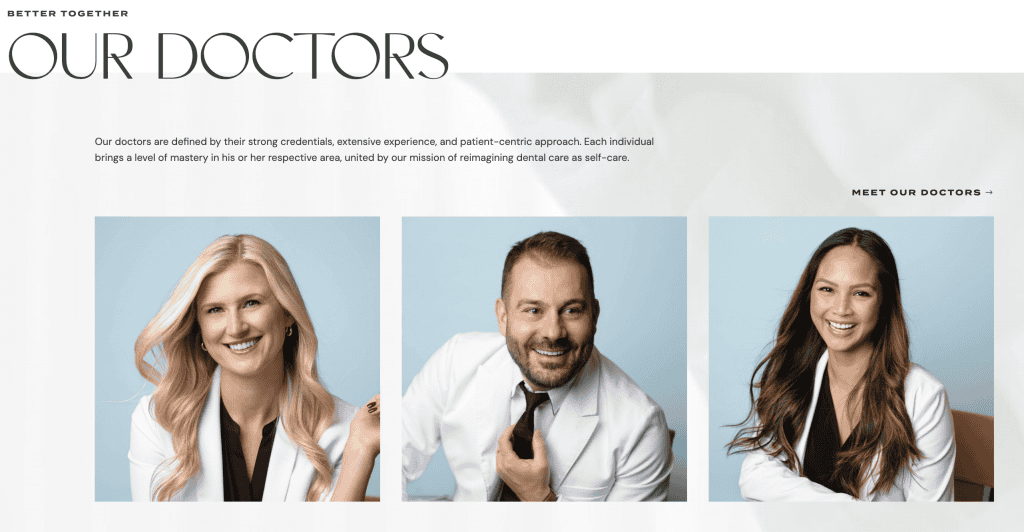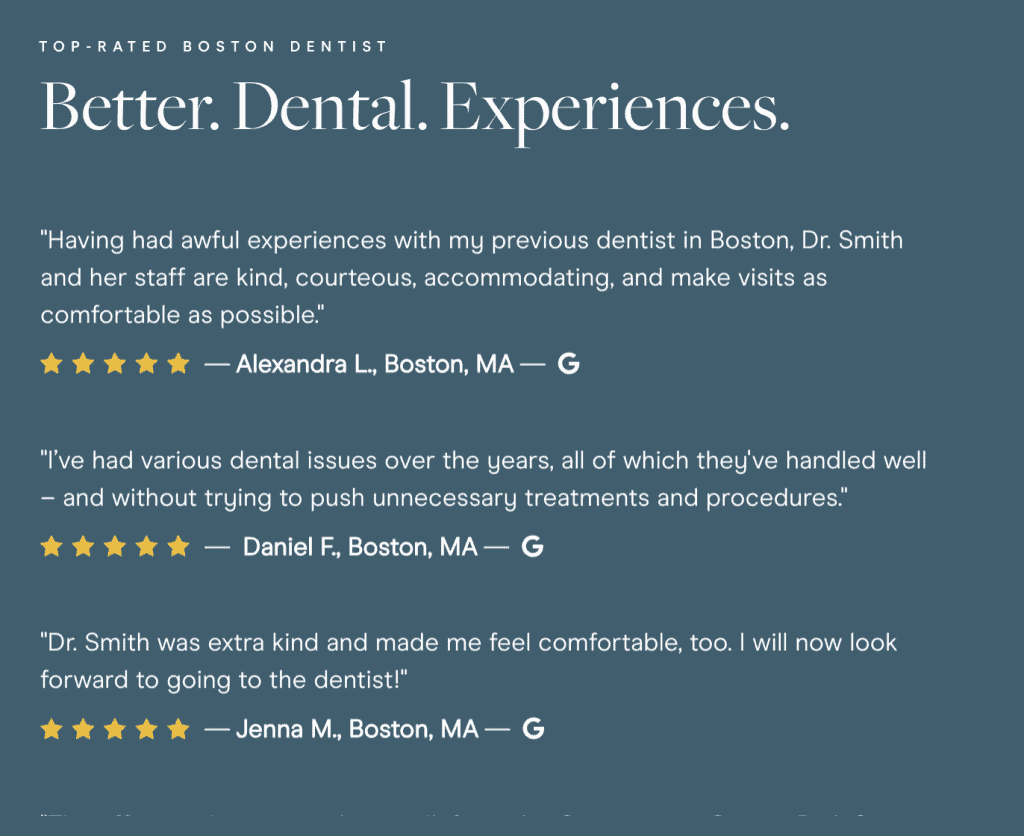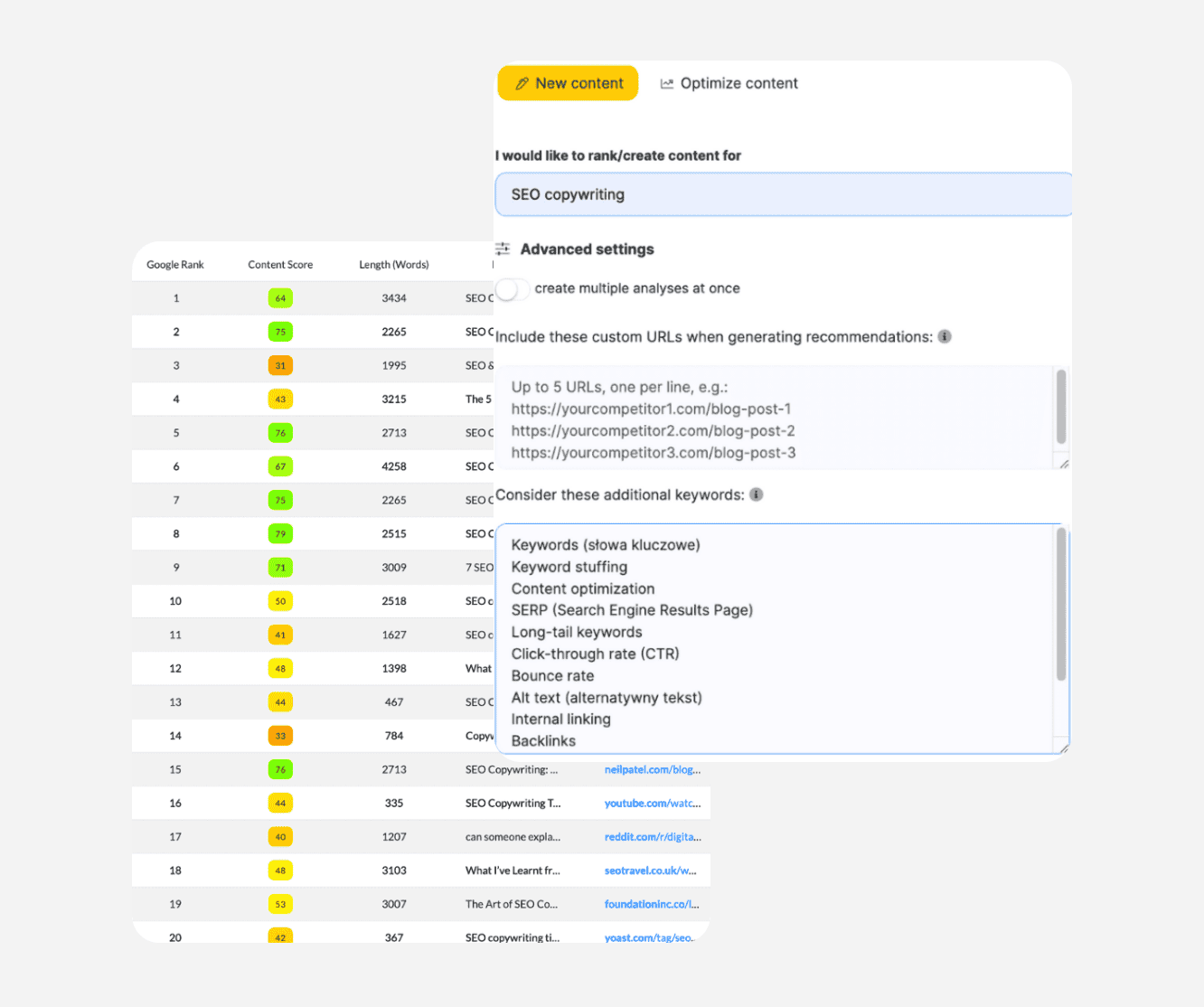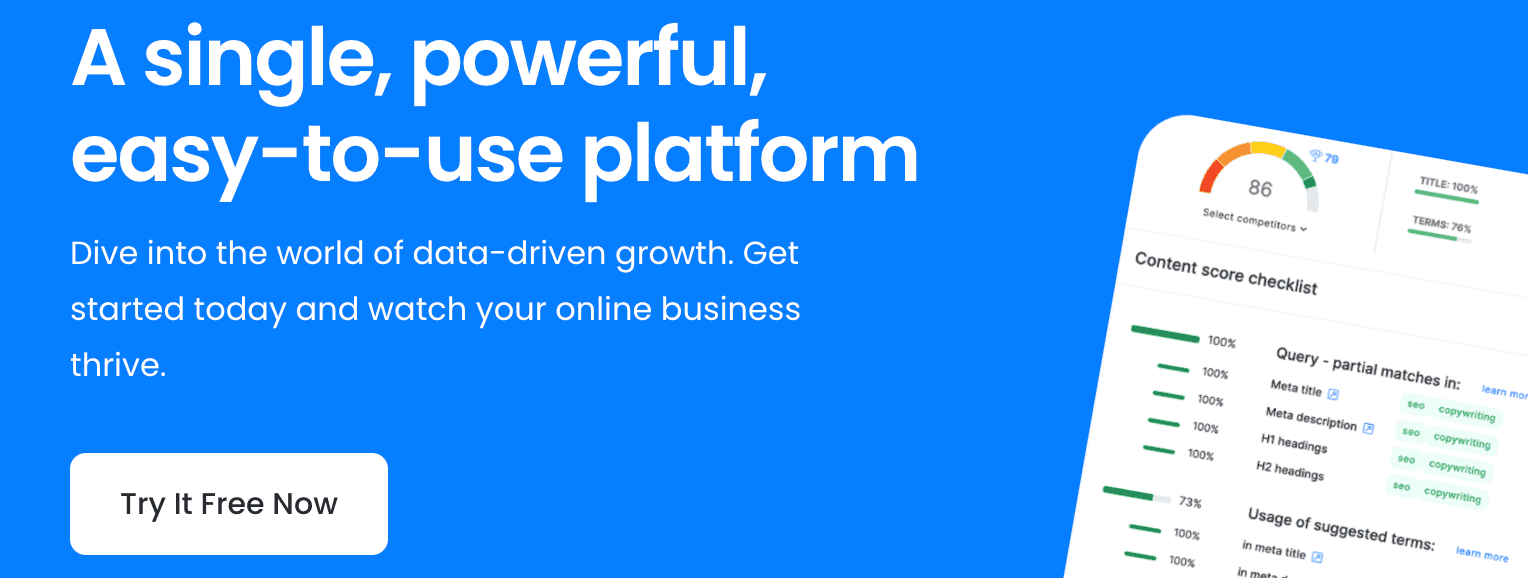SEO for dentists: how to tackle dental SEO in 2026?

Running a dental practice in 2026 means dealing with rising ad costs, tighter competition, and constant pressure to stay visible online. Many clinics rely on paid ads, even though Google CPCs in healthcare climbed more than 15% last year and continue to rise. Others try jumping on social trends, recording light-hearted TikToks between appointments. Yet the most reliable growth channel sits untouched in many practices: SEO.
Most local dentists skip it completely. That’s great news for anyone ready to take it seriously. The gap is wide, and the opportunity is real. In this guide, you’ll see what works, why it matters, and how to build an SEO engine that brings a steady flow of new patients without draining your budget.
Why dentists should take care of SEO
More than 70% of people searching for dental offices start with a query on Google. That means most potential patients won’t see your ads or social posts unless your dental website appears in the right search results. Meanwhile, around 46% of all Google queries focus on local search, which makes local SEO one of the strongest opportunities for clinics that want a stronger online presence.
For dental practices, that creates a clear upside. With smart search engine optimization, your clinic can rank higher when someone nearby types “dentist near me” or “dentist near [city].”
Clinics that show up at the top tap into a steady flow of people ready to book, and they capture that demand without recurring ad spend. That gives SEO long-term value and makes it far more sustainable than leaning only on promotions or social campaigns.
Best practices for SEO for dentists
#1 Build a keyword strategy based on the full patient journey –> from symptoms to booking
People rarely search for a dental practice out of the blue. They move through a sequence: first confusion, then exploration, then comparison. A strong keyword strategy follows that journey rather than chasing a random list of phrases. This helps your digital marketing stay focused and gives your pages a better chance to appear higher in search results, especially when AI summaries begin shaping the first answer a patient sees.
- Start with early-stage searches. These are the questions people type when they’re unsure what’s happening:
“loose tooth in adults,” “gum recession causes,” “tooth gap treatment,” “jaw pain one side.”
These queries belong on educational pages or blog explainers, and they help you reach local patients long before they commit to treatment. - Next, research mid-stage queries linked to evaluations, costs, and expectations. People look for timelines, alternatives, and recovery details. They also want to know how treatment affects daily life or insurance. These keywords work well on service pages, FAQs, or treatment-comparison guides. Many clinics also refresh small on-site details like waiting room signage to keep the patient experience consistent with the clarity shown in their online content.
- Finally, map late-stage queries tied to location, availability, and trust. These are practical searches from people ready to book:
“dental implants [city],” “best implant dentist near me,” “implant consultation tomorrow,” “implant clinic [neighbourhood].”
A new clinic that wants to grow its implant segment can build the entire strategy around this journey:
- Symptom stage: “missing tooth options,” “difficulty chewing one side,” “bone loss after extraction.”
These become top-of-funnel explainers that position your clinic as a calm, authoritative voice. - Evaluation stage: “single vs multiple implants,” “implant stages explained,” “implant healing timeline.”
These fit on treatment hubs, guides, or visual step-throughs. - Booking stage: “dental implants [city],” “implant specialist near,” “all-on-4 cost [region].”
These belong on location-specific service pages and pages tied to different implant types.
Sort these keywords into journey stages using SEO tools so the structure stays clear. This approach gives you a predictable way to plan content, helps patients find you at every stage of their decision, and strengthens the signals that SEO helps surface when someone searches with clear intent.
#2 Structure your dental website so search engines understand your services clearly
Search engines can’t promote a clinic if they can’t understand its layout. When your dental practice’s website follows a simple structure, crawlers interpret your pages correctly and your services appear more often for people searching for dental care. Clear structure also helps new visitors move through your site without guessing where anything is.
A practical framework makes this easy:
- Step 1: Group your services. Create a main “Treatments” section, then organise pages into categories such as preventive care, cosmetic work, implants, and emergencies. This mirrors how patients think and gives structure that supports top search results for each group.
- Step 2: Use clean, readable URLs. “/dental-implants” is easier for search engines than “/service?id=24.” Short, descriptive URLs help pages appear higher in search results when people look for specific treatments.
- Step 3: Link related pages together. If someone reads about “missing tooth options,” link them to implants. This guides users and helps search engines understand the relationship between topics, which strengthens your overall seo marketing.
- Step 4: Add structured data. Label pages with the correct medical schema so crawlers can recognise procedures. This small detail helps your practice show up in local searches tied to the services you provide.
These steps form a lightweight structure that supports smooth indexing and gives your local dental SEO a stronger foundation.
3. Secure strong visibility in map results and neighbourhood searches with local SEO for dentists
Local SEO shapes most new patient decisions. When someone needs help, they pull up Google Maps, scan the top three clinics, check the photos, look at reviews, and choose within seconds. A strong Google Business Profile (GBP) gives search engines the right signals and helps people trust your practice before they visit your website.
Start with your core profile details. Set the correct primary category, add your hours, list the procedures you offer, and make sure your appointment link works. These elements help Google place you in the right part of your area and match you with real patient intent.
Then focus on your visuals. In the example below, you can see how much the map pack varies.

One practice uses clean exterior photos that immediately build confidence. Another shows a realistic clinical setting, which helps people picture a procedure. A third includes an image that doesn’t relate to dental care and may create hesitation. Photos influence clicks more than most dentists realise.
Next, strengthen your review signals. High ratings matter, but volume and recency matter more. Profiles with steady new reviews feel active and reliable. They earn better engagement, and that engagement reinforces your visibility for searches like “dental implants near me” or “cosmetic dentist [city].”
Round out your local presence with clean citations and neighbourhood pages. If your clinic serves several areas, create location-specific content that reflects how each neighbourhood searches for treatment. Keep your name, address, and phone number identical everywhere you appear online.
When your GBP details, photos, reviews, and local pages all align, your practice becomes the obvious choice in moments when people need a dentist fast — and that’s exactly where most appointments begin.
#4 Create dental SEO content that supports your dental practice at every stage of treatment
Good content calms people down. When someone understands what a treatment involves, what recovery feels like, and how long things take, they feel more confident booking. That’s why content is a core part of a strong seo plan. It helps people trust you and helps search engines understand the areas where you want visibility.
Start with the questions people ask before they even know what they need. These are symptom-focused searches:
- “why do my gums bleed at night,”
- “is tooth sensitivity serious,”
- “sharp pain when biting.”
These pieces sit at the top of your content system. They introduce your expertise and help people find your dental practice before they reach the decision stage.
Next, move into the treatment phase. This is where timelines, procedure steps, and recovery expectations matter. People want to see what happens next, how long it takes, and what will feel normal. These topics form the backbone of your clusters.
A simple example:
If your clinic wants to grow its implant segment, start with one central hub page — “Dental Implants in [City].”
From that hub, you can build a cluster of 8–12 focused pages:
- Implant stages explained
- Single vs multiple implants
- Same-day implants
- Mini implants
- Bone graft basics
- Healing timeline
- Pain expectations
- Implant success rates
- Full-mouth treatment options
- Cost breakdowns for your region
This structure gives patients clarity at every step and strengthens your topical authority. Search engines reward that depth, which supports stronger SEO ranking and steadier visibility over time.
Then layer in formats that feel human. Short educational videos for nervous patients. Simple visuals that show healing timelines. Myth-busting pages that explain what is and isn’t normal. Cost explainers written in plain language. These pieces serve your audience first, and they naturally improve your dental marketing impact.
Round it out by keeping your tone clear, calm, and direct. Good content isn’t about volume. It’s about helping people understand what they’re about to go through, which makes them far more willing to choose your clinic — and supports all your SEO efforts along the way.
#5 Improve patient trust signals to strengthen visibility and on-site conversions
Trust shapes everything in dental care. People want reassurance before they book, and search engines like Google react the same way. When a clinic demonstrates real expertise, clear credentials, and safe environments, it becomes easier to attract more patients and appear in stronger search engine results. These elements work alongside your core SEO strategies, because trust helps pages perform better and makes your content easier to optimize through simple on-page SEO improvements.
Below is a clean list of trust signals, ordered by impact:
- Dentist bios with clear credentials. People want to know who will treat them. Bios, qualifications, and years of experience build trust quickly and support effective SEO for high-value dental services.

- Real clinic photos. Exterior shots, reception areas, and treatment rooms reduce uncertainty. They also help pages optimize for location queries by showing a real, safe environment.
- Before-and-after style visuals. These answer the unspoken question: “Will this treatment work for me?” They strengthen confidence and support your wider SEO strategies.
- Patient testimonials and review highlights. Short quotes, review snippets, and success stories show real outcomes. They influence conversions and help attract more patients faster than any ad.

- Clear insurance information. Transparency removes friction. When people know what’s covered, they book sooner. This clarity also helps pages perform better during an SEO campaign.
- Safety protocols and sterilization standards. Healthcare decisions are emotional. Visible safety steps reassure anxious visitors and support trust-driven ranking patterns in search engines like Google.
- Qualifications, memberships, and compliance badges. Local associations, certifications, and professional affiliations give your on-page SEO a credibility layer that’s easy to optimize and signals authority to both patients and algorithms.
These trust cues are simple to implement, and they strengthen your SEO strategies as much as your conversion rates — a rare win-win for any dental practice.
#6 Build authority for your dental SEO with ethical backlinks and local brand presence
Authority grows through real connections. Dental clinics don’t need hundreds of links: they need the right ones. A few respected mentions from strong local sources often outperform a long list of low-quality backlinks. This is where careful vetting matters. PR placements and link opportunities must be chosen with intent; the wrong links can slow visibility instead of supporting it. Ethical signals help SEO builds naturally and create stability for your long-term SEO.
Start with the safest, highest-impact sources:
Local directories. Listings from established healthcare or city directories give your dental practice online a trusted footprint. They’re predictable, clean, and useful for seo success.
Community sponsorships. Local sports teams, charity events, and school partnerships build recognition offline and produce trusted mentions online. These are the types of connections that help attract more local patients. Many local organizations coordinate their activities through nonprofit software, which gives your clinic more visibility within the community.
Dental associations and professional groups. Membership pages, profile listings, and conference features send strong authority signals. They support the “expertise” part of dentist SEO without risk.
Referral-partner pages. Collaborations with orthodontists, oral surgeons, or general clinics create natural link paths that show real professional relationships. Search engines recognise their relevance. Clinics that handle outreach in-house often rely on simple tools like cold email software to contact partners, request updated citations, or coordinate local sponsorships without manual follow-ups.
Local events and workshops. If your clinic hosts open days, dental health seminars, or free check-up drives, local media often covers them. These mentions reinforce trust and strengthen your effective SEO for dentists.

School or sports-team collaborations. Uniform sponsorships, fundraising support, and parent newsletters often link back organically: a simple, safe form of authority building that fits naturally with community care.
Choose each backlink with care. Priority goes to relevance, location, and credibility. If a link source feels unrelated or overly promotional, it’s safer to skip it. Ethical authority link building takes longer, but it keeps your dental SEO services stable and reduces the risk of penalties later.
#7 Improve your optimization with technical SEO and AI-supported audits
Technical SEO affects how people experience your website. When pages load fast, look stable on mobile, and follow a clear structure, search engines understand them more easily and patients feel more comfortable navigating your site. These improvements support the broader benefits of SEO, but they don’t need to be overwhelming. Some tasks are simple “essentials,” and others can be handled later with help from dental SEO experts or a reliable dental SEO agency.
Must-do tasks (simple and high-impact)
These are the basics that keep your dental website SEO healthy:
- Compress large images. Slow images drag down speed and user experience. Quick compression tools fix this in minutes.
- Check Core Web Vitals. A simple performance report shows whether pages load fast and feel stable. You don’t need deep technical skills to review it.
- Fix broken links. They frustrate users and confuse crawlers. A quick scan helps you remove them cleanly.
- Keep your site mobile-friendly. Most local patients browse from their phones. Responsive layouts help your SEO for dental stay competitive.
Nice-to-have tasks (helpful, but not urgent)
These improve structure over time and can be eased with AI tools or outside support:
- Add medical-organization schema. Structured data helps search engines understand your content and improves visibility across formats.
- Improve crawlability. AI-supported audits can flag pages that bots struggle to reach; useful when running SEO in-house.
- Review HTTPS performance. Strong security helps search engines trust your site more.
- Explore AI-based audits. These tools detect content gaps, technical weak spots, and opportunities to help your SEO without manual digging.
Technical SEO doesn’t have to be intimidating. Focus on the must-do list first, then upgrade gradually. When the essentials are in place, your well-executed SEO strategy becomes more predictable, and your practice is better positioned to reach the patients who need you most.
How NEURONwriter can help you grow your dental practice
If you invest in content — blog posts, service pages, educational guides — the question becomes: how do you make sure all that effort actually pays off? NEURONwriter acts like your behind-the-scenes SEO assistant. It brings structure, data and speed so that your dental SEO marketing becomes smarter and more reliable, not guesswork.
Here’s how NEURONwriter supports a dentist’s content work and why it can be a true boost for your practice:
Smart content planning & competitor analysis
Before you write a word, NEURONwriter analyzes top-ranking pages for your target keyword (for example, “dental implants [city]”). It shows you what works — length, headings, subtopics, frequently used terms. That insight helps you shape content that rivals or beats existing pages in search engine results. And you don’t need to use services or SEO tactics of so-called best dental SEO companies to do so!
Semantic optimization with AI & NLP
Instead of focusing solely on raw keywords, NEURONwriter identifies semantically related terms, synonymous phrases and user-intent signals. That ensures your articles address everything a prospective patient might search for (symptoms, treatments, aftercare) — which strengthens topical relevance and supports your broader SEO strategies.

Real-time on-page guidance
As you write, the tool offers helpful SEO tips and instant feedback: from heading structure to meta tags, internal linking suggestions, readability checks and more. So even if you or your team aren’t seasoned copywriters, or you don’t have a dental SEO specialist on board, you can still publish content optimized for SEO.
Faster production: from draft to publish
The built-in AI-writer and template system help draft intros, outlines, paragraphs, or expand short notes into full sections. For a busy dental team or small clinic, that means maintaining a steady stream of content without needing a large writing team — which aligns with the benefits of SEO for dentists who want consistent output to achieve top of search positions.
Internal linking and site structure made easier
NEURONwriter suggests logical internal links between related articles or service pages (for example, linking an implant article to a gum-health post). That helps spread authority across your site — a core principle of a well-executed SEO strategy — and improves user experience for patients browsing your services.
NEURONwriter doesn’t replace genuine writing or professional dental expertise. Instead, it acts as a reliable co-pilot for SEO content creation. For dental clinics aiming to grow their local impact, attract more patients, and ensure consistent quality, NEURONwriter can be the difference between sporadic efforts and a structured, production-ready dental website SEO engine.
Try it today!
Time to implement SEO strategies in your dental practice
What if your dental practice could be the first name people see when they search for care nearby? Because the truth is: in 2025 and beyond, good SEO isn’t a bonus. It’s essential.
When you invest wisely in SEO for dental clinics, you make it easier for local patients to find you, trust you, and book; often before they even look at ads or social media. A simple, well-executed SEO plan can ensure your practice shows up when it matters.
If you follow the guidance in this article (from choosing the right keywords and structuring your site, to creating helpful content, building trust signals, and optimizing technically) you’re not just running occasional SEO efforts. You’re laying the foundation for lasting growth and reliability.
SEO works best when it’s consistent and thoughtful. It helps you stand out in a competitive crowd, reach people who truly need your services, and build a reputation that lasts. Use this guide to SEO as your roadmap. With patience and care, your clinic can grow steadily — and become a trusted option for patients searching right now.

